Sepsis and glucocorticoids upregulate p300 and downregulate HDAC6 expression and activity in skeletal muscle
- PMID: 20538901
- PMCID: PMC2928620
- DOI: 10.1152/ajpregu.00858.2009
Sepsis and glucocorticoids upregulate p300 and downregulate HDAC6 expression and activity in skeletal muscle
Abstract
Muscle wasting during sepsis is in part regulated by glucocorticoids. In recent studies, treatment of cultured muscle cells in vitro with dexamethasone upregulated expression and activity of p300, a histone acetyl transferase (HAT), and reduced expression and activity of the histone deacetylases-3 (HDAC3) and -6, changes that favor hyperacetylation. Here, we tested the hypothesis that sepsis and glucocorticoids regulate p300 and HDAC3 and -6 in skeletal muscle in vivo. Because sepsis-induced metabolic changes are particularly pronounced in white, fast-twitch skeletal muscle, most experiments were performed in extensor digitorum longus muscles. Sepsis in rats upregulated p300 mRNA and protein levels, stimulated HAT activity, and reduced HDAC6 expression and HDAC activity. The sepsis-induced changes in p300 and HDAC expression were prevented by the glucocorticoid receptor antagonist RU38486. Treatment of rats with dexamethasone increased expression of p300 and HAT activity, reduced expression of HDAC3 and -6, and inhibited HDAC activity. Finally, treatment with the HDAC inhibitor trichostatin A resulted in increased muscle proteolysis and expression of the ubiquitin ligase atrogin-1. Taken together, our results suggest for the first time that sepsis-induced muscle wasting may be regulated by glucocorticoid-dependent hyperacetylation caused by increased p300 and reduced HDAC expression and activity. The recent development of pharmacological HDAC activators may provide a novel avenue to prevent and treat muscle wasting in sepsis and other catabolic conditions.
Figures
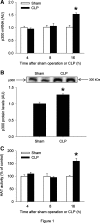
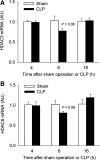



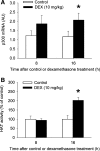
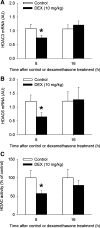



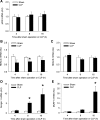
References
-
- Arany Z, Lebrasseur N, Morris C, Smith E, Yang W, Ma Y, Chin S, Spiegelman BM. The transcriptional coactivator PGC-1β drives the formation of oxidative type IIX fibers in skeletal muscle. Cell Metab 5: 35–46, 2007 - PubMed
-
- Bodine SC, Latres E, Baumheuter S, Lai VK, Nunez L, Clarke BA, Poueymiron WT, Panaro FJ, Na E, Dharmarajan K, Pan ZQ, Valenzuela DM, Dechiara TM, Stitt TN, Yancopoulos GD, Glass DJ. Identification of ubiquitin ligases required for skeletal muscle atrophy. Science 294: 1704–1708, 2001 - PubMed
-
- Cai D, Frantz JD, Tawa NE, Melandez PA, Oh BC, Lidov HGW, Hasselgren PO, Frontera WR, Lee J, Glass DJ, Shoelson SE. IKKβ/NF-kB activation causes severe muscle wasting in mice. Cell 119: 285–298, 2004 - PubMed
Publication types
MeSH terms
Substances
Grants and funding
LinkOut - more resources
Full Text Sources
Medical
Molecular Biology Databases
Miscellaneous

